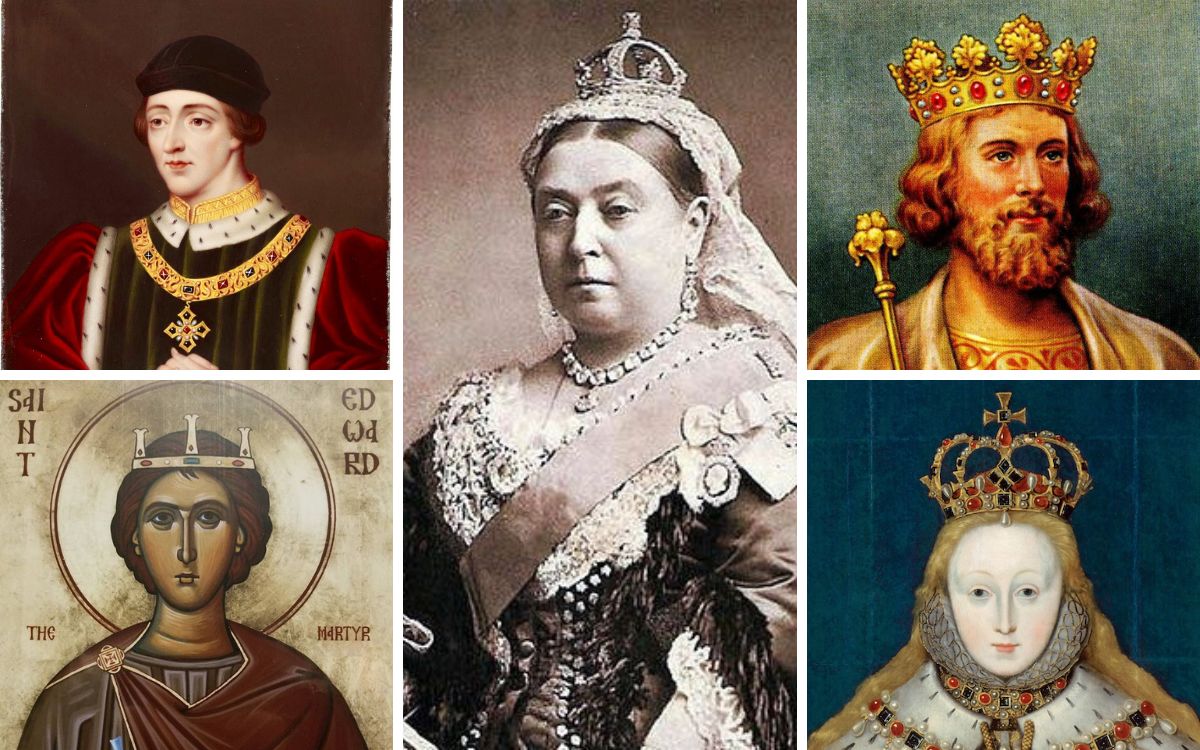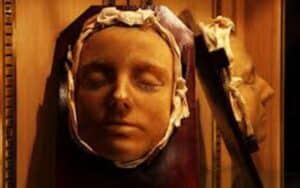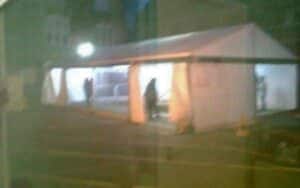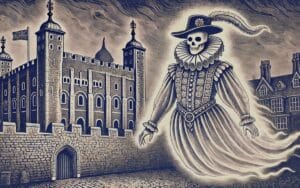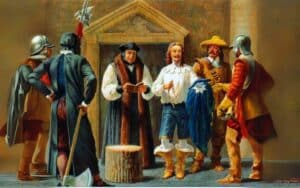Ghostly monarchs still roam the hallways and chambers of royal palaces across England. JAY HOLLIS tells us 10 of the most famous king and queens haunting these residences.
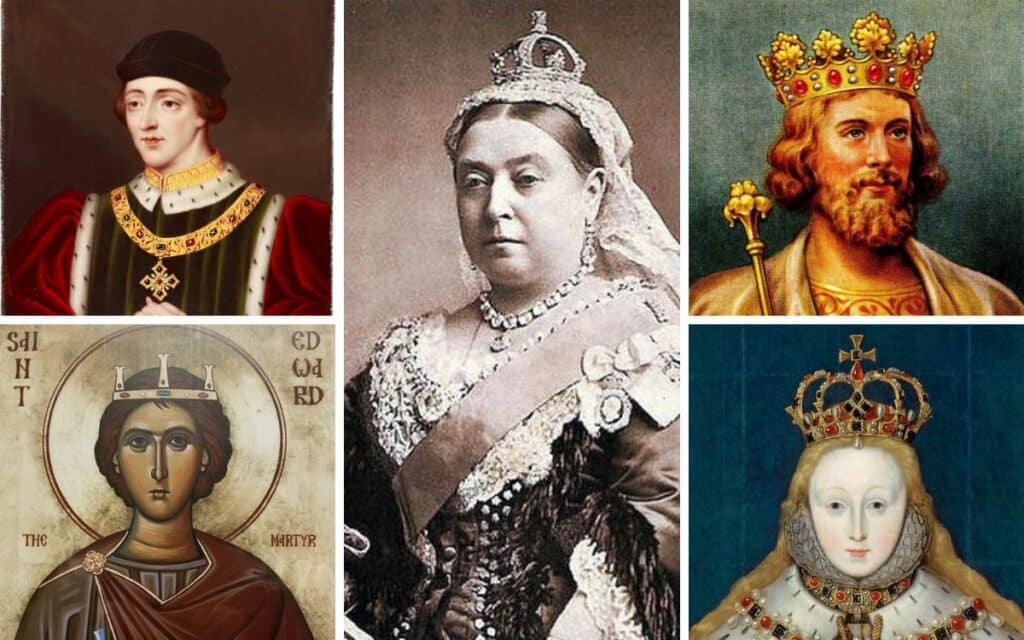
The ghost of Anne Boleyn must be one of the busiest in the country, having apparently been seen at Hever Castle, Blickling Hall, The Tower of London, Marwell Hall, Windsor Castle, Hampton Court Palace, Rochford Hall, Bolling Hall and Salle Church. She is certainly a well-travelled ghost, perhaps second only to Dick Turpin and Mary Queen of Scots.
Anne was a Queen of England through her ill-fated marriage to Henry VIII, but what of the actual monarchs?
Well, there’s plenty of those that put in the occasional other-worldly appearance, and here are 10 of them spanning almost a thousand years.
Ghostly Kings and Queens
King Edward the Martyr (died 979)
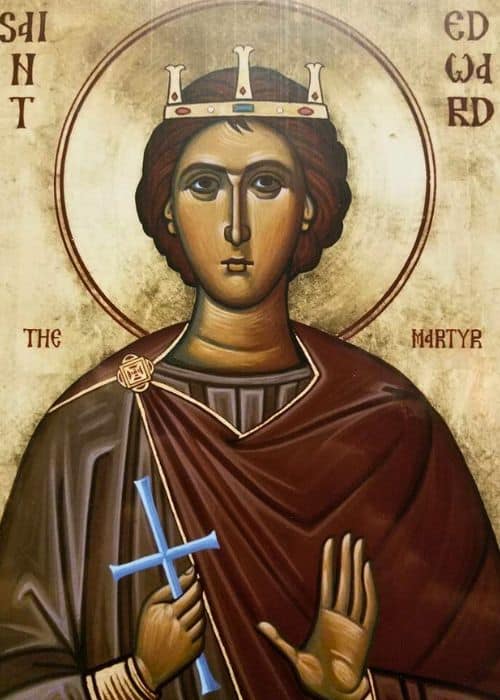
Despite the numbering system, King Edward I (who ruled from 1272 to 1307) was not the first king of England to be called Edward, for there were three Saxon kings called Edward that preceded him: Edward the Elder, Edward the Martyr, and Edward the Confessor.
As his epithet might suggest, Edward the Martyr died a violent death. The young king, still in his teens, was brutally murdered in Dorset, close to where Corfe Castle would later be built, on the orders of his stepmother, who subsequently ensured that her own son, Aethelred (the Unready), ascended the throne.
For centuries, there have been reports of two ghostly men leading a packhorse up the steep and picturesque Gold Hill in Shaftesbury, with the body of the murdered king draped over the horse.
King Harold II (died 1066)
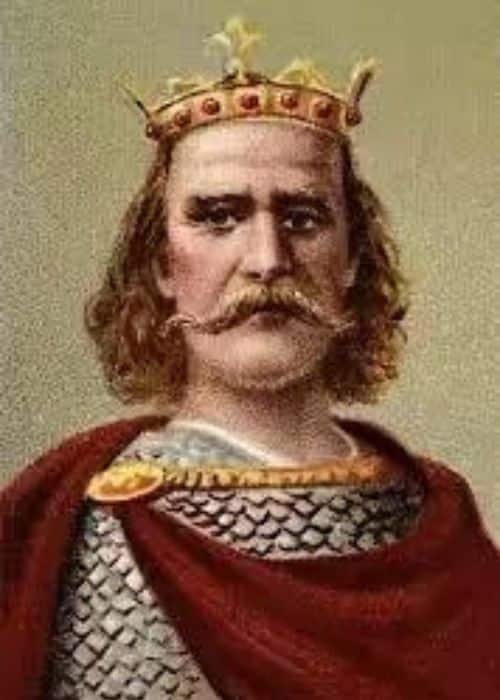
Everyone knows the story of how Earl Harold swore an oath to William of Normandy and then broke that oath to usurp the English throne upon the death of King Edward the Confessor. Oh, if only it were that simple.
The Anglo-Saxon laws of succession didn’t rely on primogeniture, which was introduced by the Normans. The next king was chosen by the Witan, the king’s council, and in January 1066, Harold Godwineson, the Earl of Wessex, was deemed to be the likeliest candidate to run and defend the country against invasion; he’d effectively been running it for the past 10 years on behalf of his predecessor anyway.
As we all know, the reign of King Harold II was short-lived and ended in tragedy at the Battle of Hastings. Whether he was actually struck in the eye by an arrow is conjecture. What we do know, thanks to near-contemporary accounts, is that after seven hours of fighting, four Norman knights broke through the English shield wall and cut Harold down.
The last Saxon king was dead, but still, they hacked at his body, severing limbs and leaving his face unrecognisable. William was furious with the knights, but Pope Alexander II, who had given his blessing to William’s campaign, was even more furious with William.
As part of his penance, William built an abbey on the site of the battlefield, with the high altar placed, so it is said, at the spot where Harold fell. Battle Abbey is now a ruin, but the site of the high altar is marked by a plaque, and it is here that Harold’s ghost is said to appear, clad in his chainmail hauberk.
King Edward II (died 1327)
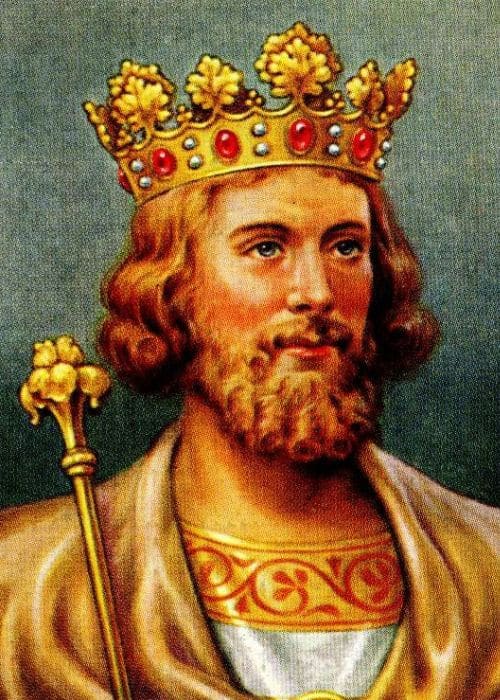
I think it would be fair to say that Edward II was not particularly good at his job, and longstanding disagreements with his barons eventually degenerated into an open rebellion led by Sir Roger Mortimer and his lover, Queen Isabella of France, Edward’s wife.
In 1326, the couple staged a military invasion, deposed Edward, and had him imprisoned at Berkeley Castle in Gloucestershire. It is a popular belief that the deposed king was murdered there the following year by having a red-hot poker thrust into his rectum, although modern scholars believe it is more likely that he was starved to death.
Nevertheless, it is said that his agonised screams can still be heard at Berkeley Castle.
King Henry VI (died 1471)
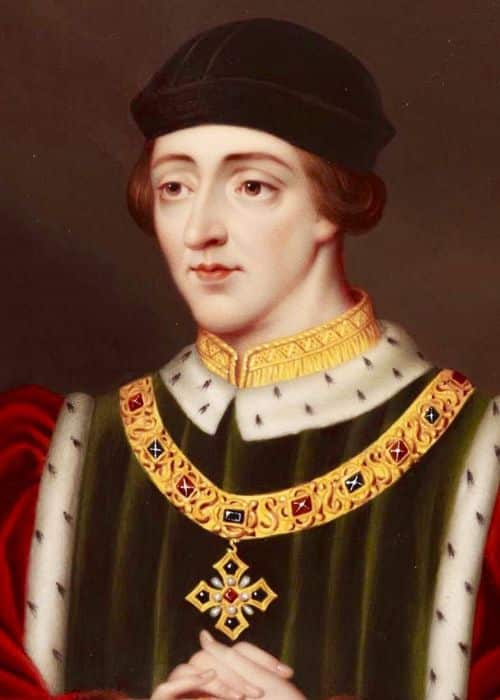
Poor Henry was still a baby when he became king upon the unexpected death of his father, the warrior king Henry V. He may have been King, but the young Henry was very much a political pawn throughout both his childhood and adult life.
His incompetence in government and increasingly fragile mental health were contributing factors to the onset of the Wars of the Roses. Throughout that conflict, it was his Queen, Margaret of Anjou, who commanded the Lancastrian forces in defence of Henry’s crown.
He was deposed and imprisoned at the Tower of London in 1461, and his rival Edward IV became king, but in 1470 Henry was restored to the throne, and Edward fled into exile. He returned a few months later, and Henry was once again imprisoned at The Tower. Edward then won two victories against the Lancastrians, first at Barnet and then again at Tewkesbury.
Edward returned to London on 21 May 1471, and Henry, still at the Tower of London, was put to death that same night while at prayer in the King’s private chapel in the Wakefield Tower. His sad ghost is said to appear there at the stroke of midnight.
King Edward V (died 1483)
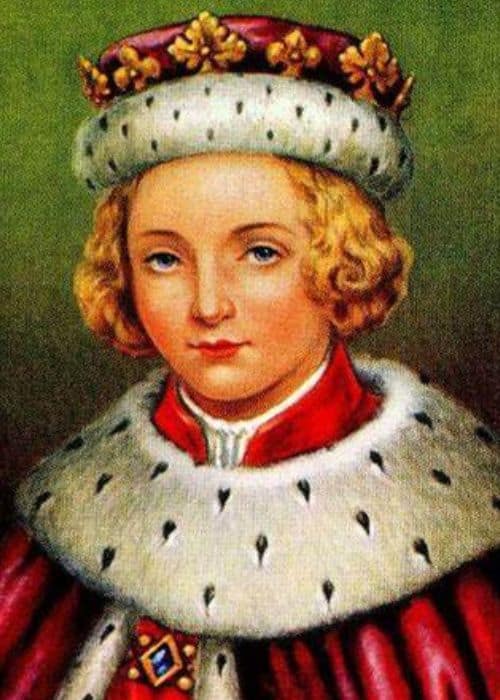
Another ghost said to haunt the Tower of London is that of the boy king, Edward V. Remembered by popular history as ‘The Princes in the Tower‘, nobody knows for certain the actual fate of Edward and his brother Richard, Duke of York.
They were the sons of Edward IV, who died suddenly in April 1483, leaving 13-year-old Edward to succeed him as king. However, two months later, an act of parliament declared that the children of the late king were illegitimate, and their uncle Richard was declared king.
Edward and his brother were last publicly seen at the Tower of London in 1483, and it was soon rumoured that they had died, probably by murder. Shakespeare tells us the two boys were put to death on the orders of their wicked uncle, Richard III, whose guilt in that matter has been hotly debated ever since. Their ghosts have frequently been seen, so it is said they are at the Tower, dressed in their nightshirts and holding hands.
Medium Eddie Burks claimed in Ghosthunter, which he wrote with journalist Gillian Cripps, that he was contacted by the spirits of the two boys after he had visited the Tower and they confirmed to him that they had been murdered but that the deed was done after their uncle had been killed at Bosworth.
Henry VIII (died 1547)
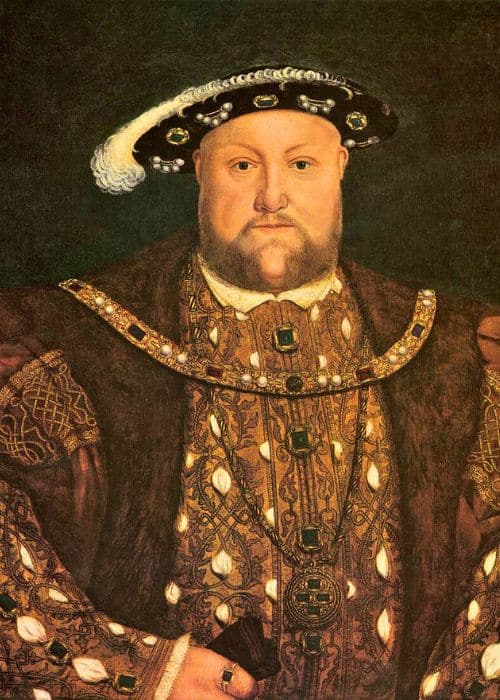
One of England’s most famous, or perhaps infamous, monarchs should require no introduction.
Henry began his reign in 1509 as a popular, handsome, athletic, and charismatic young man, a far cry from the dangerously ill-tempered and obese tyrant that he had become by the time of his death.
He was buried at Windsor Castle, and it is there that his ghost has been seen, angrily limping on his ulcerated legs through the deanery cloisters and sometimes shouting out orders, much as he did in life.
Queen Elizabeth I (died 1603)
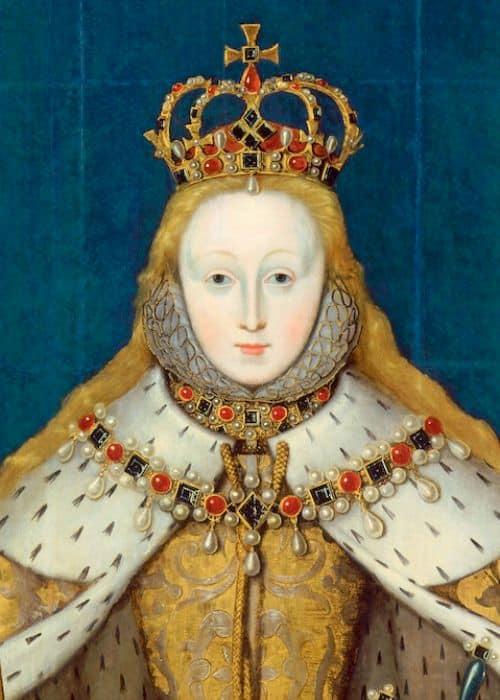
In Haunted Castles of Britain and Ireland, Richard Jones relates the story of a guardsman who saw the ghost of Elizabeth I in 1897.
He was in the library at Windsor Castle when a lady dressed in black walked past him. He thought she resembled portraits he had seen of Elizabeth I and followed her around a corner to take another look, but she had disappeared.
However, there was no exit through which she could have left the room without walking past him again. The same apparition was seen in the library about 40 years later by the young Princess Elizabeth, later to become Queen herself, and her sister, Princess Margaret.
Their father, George VI, claimed to have seen Elizabeth’s ghost on eight consecutive nights at the beginning of the Second World War.
George III even claimed that he’d spoken to her when he encountered the ghost in the library, and she replied to him that she was married to England.
King George II (died 1760)
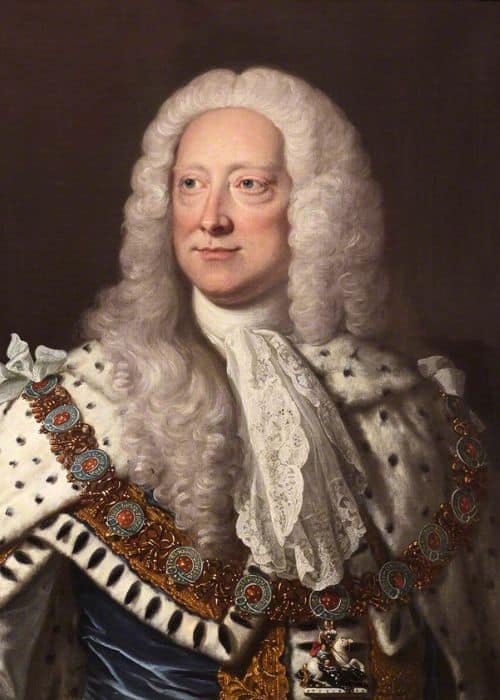
George II was the last British monarch to be born overseas. He grew up in Hanover and came to England in 1714, when his father accepted the throne as King George I.
He succeeded his father 13 years later and reigned for 33 years. George died at Kensington Palace, and in his final days, he had been waiting for news from his beloved Hanover – news that was delayed due to bad weather and never reached the king.
His ghost has been seen staring at the palace’s weather vane, muttering, “Why don’t they come?” in a heavy German accent.
King George III (died 1820)
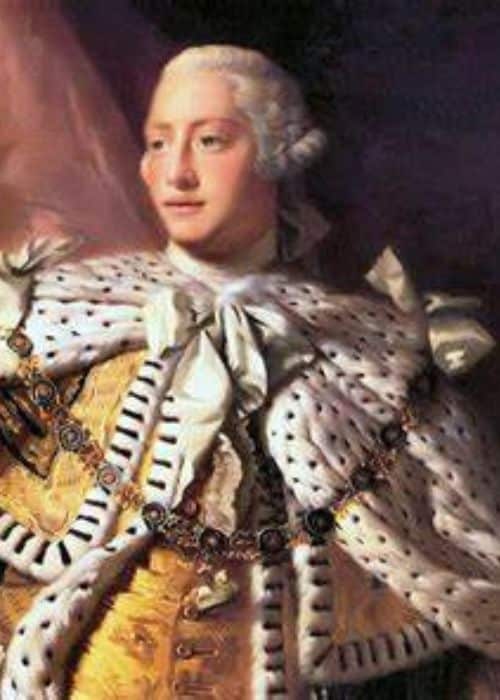
Returning to Windsor Castle, on a cold winter morning in 1820, a troop of guards were marching through the grounds – an everyday occurrence. As they passed the King’s bedroom window, their commanding officer noticed the old man watching them, gave his troop an “Eyes Right” command, and saluted the King.
They all saw the king return the salute, but King George III had died a few days earlier, and his body was at that time lying in state in St George’s Chapel. George III is remembered, perhaps rather cruelly, as the king who went mad.
It is believed that his bouts of insanity were caused by porphyria, a rare hereditary blood disorder that some believe may have been the origin of various vampire legends.
Not that I’m suggesting a former King of England was a vampire, because he wasn’t. His rather sad ghost has also been seen elsewhere at Windsor Castle, where he was confined throughout his illness.
Queen Victoria (died 1901)
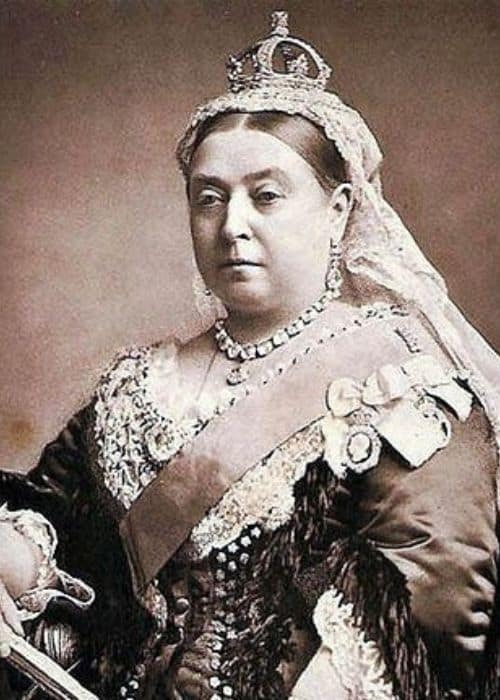
Queen Victoria is famous for saying “We are not amused”, except that she never actually said that phrase and, by all accounts, had a very mischievous sense of humour.
Her great-grandson Edward VIII was king from January to December 1936, when he abdicated the crown so that he might marry American divorcee Wallis Simpson.
During that year, Mrs Simpson set about redesigning the gardens at Windsor Castle and began by ordering the removal of some spruce trees that had been planted by Queen Victoria’s husband, Prince Albert.
That work was never carried out, for as the gardeners began their preparations to cut down the first tree, they were scared off by the angry apparition of the old queen shouting at them and waving her arms. She was not amused!
Have you seen any ghosts of kings and queens? Tell us about it in the comments section below!
Read more about Haunted Royal Palaces on Spooky Isles

